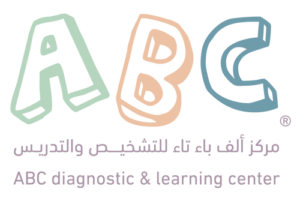Many behavioral therapies have been used to treat young children with autism spectrum disorders (ASD), including Applied Behavior Analysis and Pivotal Response Training. Older children, teens, and adults with ASD may benefit from another intervention with a behavioral component: Cognitive Behavioral Therapy (CBT).
Beyond Behavior
Therapies based on the science of behavior have been effective for people of all ages, and are an essential item in any mental health professional’s toolkit. They only go so far, however. Human beings are “meaning makers.” That is, their behavior is not just the result of stimulus and response or reward and punishment. They take in what is happening around them and give it meaning, loaded with emotion. Then they behave.
CBT takes into account the thoughts (or cognitions) we have about things, the feelings that result, and the behavior that follows.
CBT: A Powerful Approach
People often get stuck in patterns of thinking and responding that are not helpful, partly because they filter everything that happens through a “meaning-making system” that is skewed or inaccurate. Therefore, one way to change people’s feelings or behavior is to target distorted thoughts they have about themselves and their lives. This helps them shift the way they interpret situations, how they feel about those situations, and how they respond to them. It is an extremely powerful intervention, and has been proven effective in the treatment of many conditions, including depression, generalized anxiety disorder, panic disorder, and post-traumatic stress disorder.1
There are a variety of CBT approaches, but most share some common elements.2 These include a structured, goal-directed approach that is time-limited, usually taking 12-16 sessions. Therapy, which is conducted according to a specific plan, does not delve much into the past, but focuses on the here and now. A CBT program’s success is measurable precisely because there is a plan, a goal, and a limited time in which to accomplish it.
At the heart of CBT is a challenge to a person’s belief system. For example, say a depressed person believes he is worthless. He is constantly telling himself this, and views everything that happens to him through this negative lens. If a friend crosses the street before greeting him, he does not think: “He was in a rush and needed to get to the dentist’s office over there.” Instead, he thinks, “I am worthless and so he is avoiding me.” This can lead to a cascade of automatic thoughts. “Nobody will ever be my friend. I will always be alone.” Clearly, these thoughts will lead to more negative feelings, more negative interpretations of events, and more isolation, creating a downward spiral.
With a therapist’s help, the individual is encouraged to challenge both his beliefs and his automatic thoughts through a variety of techniques. He may be asked to view his beliefs as a hypothesis or possibility, rather than a fact, and to “test the validity” of these beliefs by looking for real evidence (which he usually will not be able to come up with). He may use self-talk to coach himself through a situation, deliberately replacing negative thoughts with more positive ones. He may, with the therapist’s help, rehearse a future situation, going through steps (such as relaxation, deep breathing, and an encouraging internal dialogue) that will help him cope. As he gains these skills, the therapist may expose him to increasingly difficult situations in a process called graded exposure.
Another key part of treatment is psychoeducation, which involves teaching someone about her condition. Whether that condition is obsessive-compulsive disorder or anxiety, it is important that she understand why she’s been having so much difficulty; how to identify when the condition is affecting her; and how to interrupt and stop it. Imagine a person with a panic disorder who, as the panic begins, feels a terrible tightness in her chest. She is certain this is a heart attack, and is terrified she may die. Her panic spins out of control, the pain and the panic now fueling one another. After learning about panic attacks, she can understand that this feeling is just part of a dysfunctional process that isn’t her fault. Recognizing the signs of an impending attack early enables her to begin using the skills she has learned to keep herself calm so the cycle is shortened or prevented altogether.
Adapting CBT for ASD
In recent years, there have been a number of attempts to adapt CBT for children and teens on the autism spectrum. The focus has often been on those who also have anxiety because this is so common in individuals with ASD.3,4
One challenge was to find out whether children with ASD have the skills necessary to succeed at CBT. Fortunately, it appears they do. A study published in 2012 evaluated the cognitive skills of children with ASD and compared them to those of typical children. The children with ASD had the skills required for CBT in almost every instance. They were able to distinguish thoughts, feelings, and behaviors, and to work on altering their thoughts. Their only area of difficulty was in recognizing emotions.5
In addition, traditional CBT tends to require strong linguistic and abstract thinking abilities, and these can be a challenge for individuals on the autism spectrum. Realizing this, researchers have worked to develop modifications to CBT that render it more ASD-friendly, such as making it more repetitive, as well as visual and concrete.
For example, instead of merely asking children to verbally rate their anxiety on a scale of 1 to 10, the therapist might have a thermometer showing anxiety from low to high and have the participants point to the prop to illustrate how high their anxiety is around a certain situation. Another strategy is to focus on the children’s talents and special interests, which helps keep them engaged and motivated, and to build in frequent movement breaks or sensory activities for those who might have problems with attention or sensory under- or over-reactivity.6,7,8
The researher Susan White notes that CBT should also address social skills in individuals with ASD because “the core social deficits in young people with ASD contribute to the experience of anxiety, which then serves to intensify the teen’s social problems.” 9
CBT can be delivered in a variety of ways: individual, family, group, or even family and group. The advantage of group CBT is that individuals with ASD learn that others are struggling with the same issues, and they begin to overcome them together. Friendships and social support gained through this process may be healing in themselves.10
The advantage of family CBT is that it involves parents, educating them about their child’s challenges and teaching them to encourage use of CBT techniques when real life situations confront their child. This can make them feel more hopeful and confident in their ability to contribute to positive change in their child’s life.10
Researchers have found that one issue that can be particularly tough for parents of children with ASD is how much to shield or protect them from potentially negative experiences. The children often have a history of emotional and behavioral challenges and of real and painful failures in the world. Parents are reluctant to expose their child to any more failure, and may unwittingly limit exposure to experiences that are necessary to help the child become more independent and less anxious.
CBT Effective for ASD:
The gold standard for demonstrating a treatment’s effectiveness is the randomized controlled clinical trial (RCT). In an RCT, children receiving a therapy are compared with those who are not. A number of clinical trials have investigated the use of CBT for children with ASD, with promising results for the treatment of anxiety,7,8,10,12 daily living skills,13 and anger management.14 Although only limited research has been conducted so far on CBT for adults with ASD,15 there is every reason to hope the treatment will be as effective for them as for older children and teenagers.
It is well known that early intervention is important, but people with ASD are only young for a brief interval. In years to come, CBT is likely to be a major treatment improving quality of life for older children, teens, and adults on the autism spectrum.










